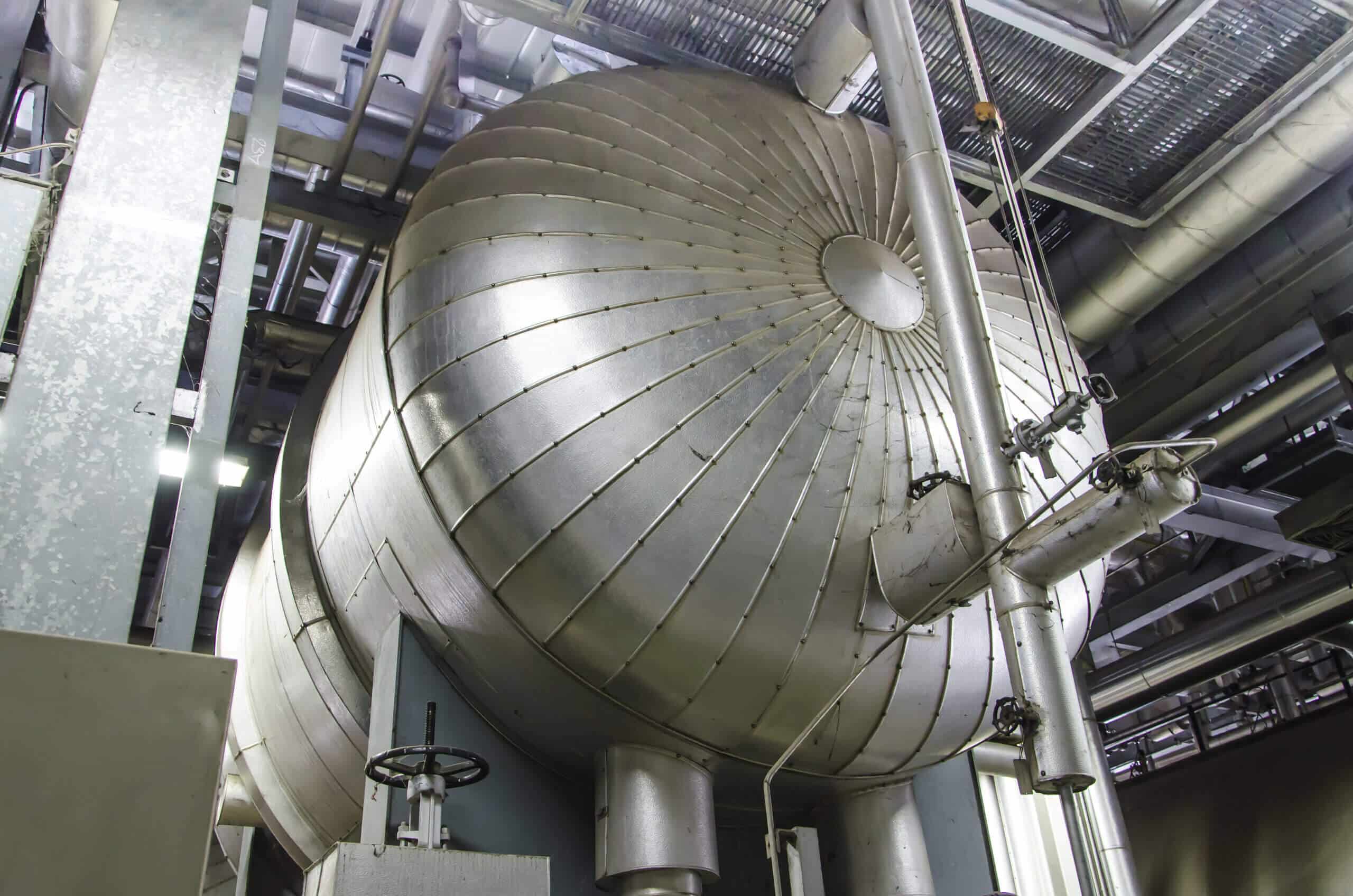For many reasons – reliable, efficient service; operating simplicity; maintenance ease and convenience; and environmental compliance – a steam-jet chiller was the choice for the new chlorine dioxide plant at Mead’s Fine Paper Division facility in Chilicothe, Ohio.
The facility needed to double chilled-water production to support an expanded chlorine dioxide plant. In chlorine dioxide production, cold, deaerated water absorbs the gas in an absorption tower, so a continuous flow of chilled water is needed for around-the-clock production.
An existing vacuum chiller was still turning in efficient, problem-free service after 10 years of continuous service for the mill. This was a strong argument for again selecting simple, reliable steam-jet technology to supply the increased chilled-water need. Environmental considerations were also important, since a steam-jet chiller operates without Freon or other chemical refrigerants.
However, the deciding factor was Mead’s ability to maintain the steam-jet unit in-house.
The choice of manufacturer required no discussion. After 10 years’ successful operation of a Croll Reynolds’ CHILL-VACTOR steam-jet vacuum chiller at the Chilicothe mill, the Westfield, NJ manufacturer won the unanimous vote for the new unit.
Early in the fall of 1991, planning began for the Chilicothe expansion. The project was to double chlorine dioxide production to 35 tons per day. In October, 1992, the expansion was completed with equipment on line and operational.
The expansion involved many changes: Larger reactor; generator line increased to handle the higher vacuum; larger scrubber systems.
Refrigeration requirements were carefully reviewed. The original CHILL-VACTOR was installed in 1981 and was designed for 493 tons, or chilling 338 gpm of water from 85 degrees F to 50 degrees F, using a four-stage flash tank arrangement.
The use of a mechanical refrigerator unit was considered. Although there were factors that seemed to favor this approach, the reliability and favorable history of the steam-jet was not ignored.
Mead management sought minimal down-time, low maintenance and operating costs, and simple operation. The decision was made to select another vacuum system.
The operating personnel, being familiar with the steam-jet chiller, were pleased because they knew that yearly inspection of steam nozzles, gaskets and general condition was all that was required. Over the years the system has operated trouble-free without interruption. Plant personnel refer to the system as being “maintenance friendly” since it requires so little maintenance and provides steady, reliable operation. The unit is idle only during plant shutdown.
Once the type of equipment was selected, Mead contacted Croll Reynolds Company through BE&K Engineering. The new specifications were for a unit to cool 600 gpm of water from 85 degrees F to 45 degrees F, or 1000 tons of refrigerant.
This operation called for a four-stage CHILL-VACTOR consisting of a 78 in. diameter two stage barometric condenser, with four 36 in. booster EVACTORS, with an overall unit height of 92 feet. The complete unit included ladders, platforms and a control system. A special corrosion-resistant paint was selected to protect the system from the hostile environment of the bleach plant area.
The unit had to be a free-standing structure suitable for wind and seismic load, so the chill tank and barometric condenser were built in one piece. This also minimized installation time and eliminated a major source of air leakage, the interconnecting body flange.
The new unit was installed next to the original win an interconnecting platform. This means that the two units can be operated in parallel to handle increased demands; otherwise, the original unit is held on standby.
The chiller operates with motive steam at 45 pig and chills soft water from a water softening plant. The water is cooled, then flows directly to the process and returns in a closed-loop system. The condenser water discharging from the barometric condenser into the integral hotwell is then pumped to a dedicated cooling tower.
The controls allow for varying loads and turndown, as well as the ability to reduce steam pressure when the condenser water temperature is below design point. During this period, considerable steam consumption is saved. In general, a saving of approximately 10% of design booster steam flow may be realized for each 5 degree F reduction in condenser water temperature below the design point. CHILL-VACTORS, as are any vacuum producing unit, are designed for the worst conditions, i.e., highest condenser water temperature and lowest operating steam pressure.
Mead’s plant personnel and BE&K engineers designed the control system based on input from Croll Reynolds’ engineers. The result is a totally remote-controlled system monitoring process chilled water temperature, chill tank/flash compartment pressures, interstage pressure of condenser, liquid level and outlet temperature of the chilled water and barometric tailpipe temperature increase above 45 degrees F. An interlock shuts down the chlorine dioxide plant if necessary and remains in complete compliance with EPA regulations.
By: Theresa Mossbarger, Pulp Mill Area Process Manager – Mead Paper Company.
Vacuum Cooling Process Aids in Tobacco Storage Problem
The American Leaf Organization of the Imperial Tobacco Company of Great Britain and


